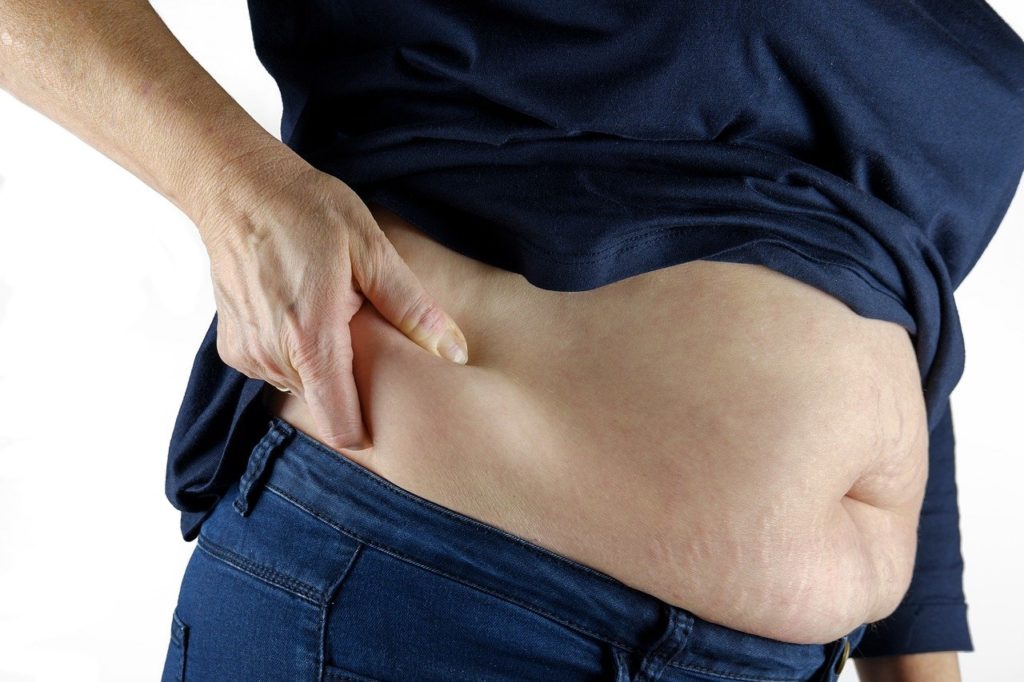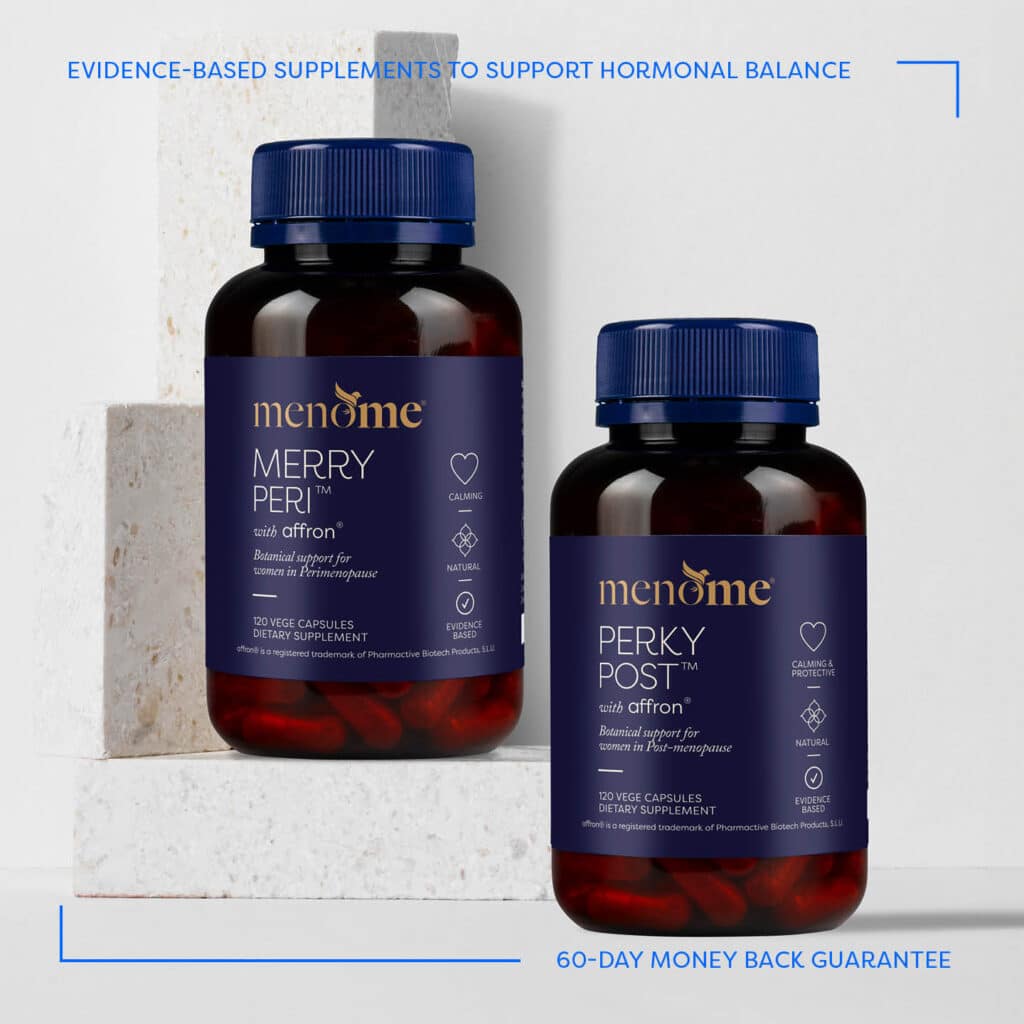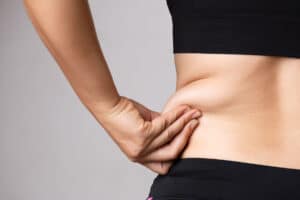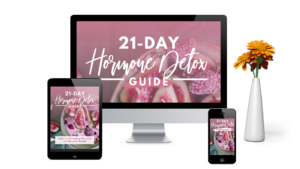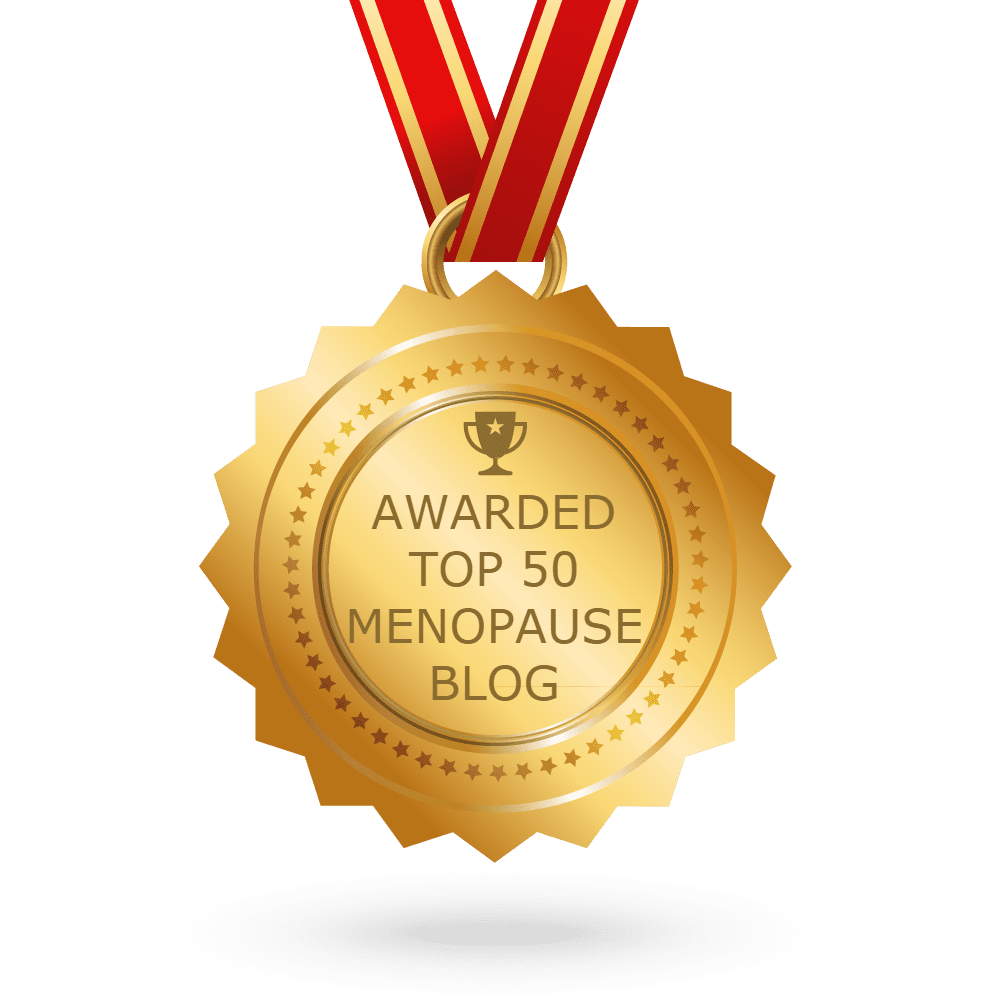“I just have to look at food and I put on weight.”
We hear this all the time! Indeed, we’ve learned that one of your biggest pain points on the menopausal journey is weight gain. In particular menopausal belly fat or ‘meno belly’ as it’s sometimes called.
It’s the feedback we receive on the daily. And we get it. The good news? You can kick it to the curb.
How to lose weight & menopausal belly fat
Unless you’re a person who finds it difficult to put on weight, feeling your clothes get tighter doesn’t feel good. (Although, we understand chronic weight loss can be just as distressing.)
Couple that with your waistline disappearing and fat depositing itself on your belly and it’s enough to make you scream. According to the Australasian Menopause Society, women can expect to gain approximately 2.3kg during the menopausal transition. Growing older, a slowing metabolism, an increase in fat tissue and loss of lean muscle mass all contribute. Lifestyle is also very much a causative factor.
But it’s the hormonal changes that cause the body shape changes. According to The American Journal of Obstetrics & Gynecology, higher ratios of androgens/testosterone to estrogen is the reason most women move from a pear shape to an apple shape as fat shifts from the butt and thighs to the belly.
Menopause is also a time when insulin levels rise, thyroid activity can drop and leptin, the satiety hormone decreases. The stress hormone cortisol often rises too. These can all play a part in belly fat, a type of fat your body will hold onto for dear life. This is why avoiding refined sugars and carbohydrates and minimising stress (keeping insulin and cortisol stable) are crucial from perimenopause on. It’s also why you should ask for a broad panel thyroid test. The traditional TSH (thyroid-stimulating hormone) test doesn’t give enough detail.
Did you know? Stress can exacerbate weight gain and menopausal belly fat?
You can turn it around
Phew! Now that that’s out of the way let me shout that it’s not all bad news!
- Knowledge is power.
- A bit of know-how and commitment can conquer belly fat.
- Your body will still undoubtedly change shape but in a way you’re happier with.
Out of control weight gain doesn’t have to be a given. In fact, plenty of studies have shown it’s not and for your best health and vitality, it shouldn’t be.
However it may require some lifestyle shifts.
How not to lose belly fat
Before you begin starving yourself and maniacally exercising, entering marathons and signing up for bootcamps STOP!
Morphing into an exercise warrior won’t work well if you’re not used to it and may even encourage weight gain.
In fact, research has shown that the body may go into compensatory mode and hold onto the weight. This is why we always make a point of advising that the right type and duration of exercising and not over-exercising is vital for weight loss.
So take a moment to discover (or re-connect with) the 80/20 weight loss rule.
How to lose weight using the 80/20 weight loss rule
The ’80/20 weight loss’ rule
- 80% food
- 20% movement
An optimal weight isn’t about exercising more it’s about the food you eat.
Read that again.
An optimal weight isn’t about exercising more it’s about the food you eat.
Takeaway: The bulk of your weight loss efforts depend on what you do in the kitchen.
The Pareto Principle
This theory takes the Pareto Principle, a well-known tool used in business and sports and applies it to weight management. The rule works on the theory that 80% of consequences come from 20% of causes. So 80% of your weight is determined by what you eat and 20% is attributable to the physical activity you do.
Don’t get me wrong here. Movement is still key. Alongside staggering wellness benefits it helps burn the calories you ingest, moves nutrients through the system and keeps your metabolism buoyant.
But it’s not the secret to weight loss.
Your food choices are.
What burns body fat?
You probably already know losing body fat requires a calorie/kilojoule deficit. Your body needs to use more calories than you feed it. For best results and satiety reducing your caloric intake with higher nutrient, less kilojoule dense foods is key. Then it’s about your basal metabolic rate (how much energy your unique body uses when it’s at rest). Thermogenesis, or the energy your body uses to digest your food is also important. Then there’s how much physical activity you do.
Most people are surprised to learn:
- Basal metabolic rate accounts for 60-75% of our energy expenditure. This decreases with age but doing resistance training helps raise it again.
- The thermic effect of food – or the energy we use digesting and absorbing our food – accounts for 10%.
- Physical activity only churns approximately 15-30%. This includes incidental exercise or non-exercise activity thermogenesis (NEAT ) along with your more formal workouts.
Tip: This tool can help you work out how much energy you burn through your chosen exercise.
Does that help to explain why – when it comes to weight loss – food is first?
Food first
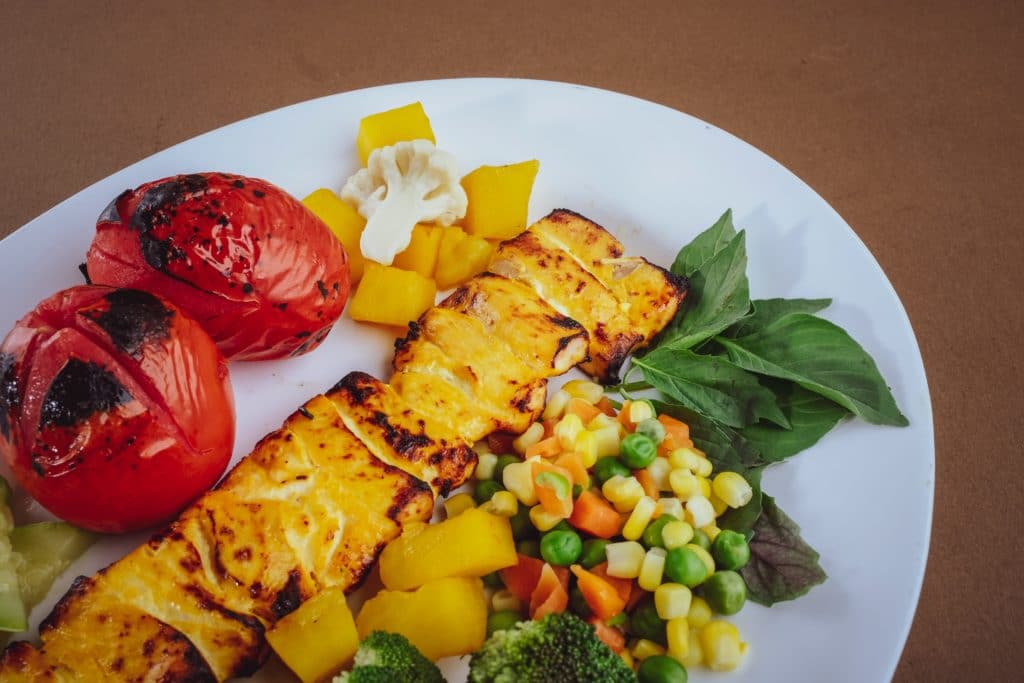
Here are some simple food guidelines to follow for weight loss:
- Drink! Oodles of filtered water. Why? Click here
- Eliminate coffee and alcohol while you’re losing weight
- Cut out sugar
- Removed processed foods and refined carbohydrates from your diet
- A good rule of thumb is to say no to white flour and sugar
- Add in more vegetables – add a variety of colour. It seems like a lot but if you can eat at least five to 10 servings a day you’ll find your everything changes. This study showed the weight loss benefits of five serves of vegetables per day
- Add plenty of fibre to your day. It will keep you full and regular. Find it in fruit and veg, whole grains and pulses like beans, peas and chickpeas
- Include phytoestrogens in your diet. You can get our free phytoestrogen e-guide here
- Choose whole foods: fruit, vegetables, nuts, seeds, whole grains like oats, quinoa, brown rice, herbs and spices, extra virgin olive/hemp seed/avocado oils, fish and seafood
- Add lean protein like fish and seafood, beans, peas and lentils
Tips
- Focus on health over weight loss
- Keep a food diary
- Use a smaller plate
- Front load. Eat more in the morning and decrease the later into the day
- Watch your portion size
- Load at least half your plate with vegetables
- Close the kitchen three hours before bed
- Try and get as much sleep as you can as a lack of sleep is associated with weight gain
These are basic healthy guidelines to lose weight. They’re actually similar to The Mediterranean Diet which is constantly proven to be a good choice for women’s health. And for human longevity.
Try it for three weeks and see how you go.
If you’re seeing good results but you’d like some treats, implement the 90/10 rule. This means keeping going as you are but allow yourself a wee treat 10% of the time. Monitor how your body and weight loss react. It’s not about perfection.
Example menu:
- Breakfast: Oats or scrambled eggs/omelette with spinach
- Snack: One piece of fruit
- Lunch: Vegetable salad with extra virgin olive, hemp seed or avocado oil, hard-boiled egg, cottage cheese (or vegan alternative) and warm or cold baked sweet potato (kumara) in its jacket or cubed
- Snack: Apple and 8 almonds
- Dinner: Lean protein such as salmon or chicken with lots of green vegetables.
It’s amazing how your tastebuds reset and you no longer crave foods that don’t serve you well.
All-important movement
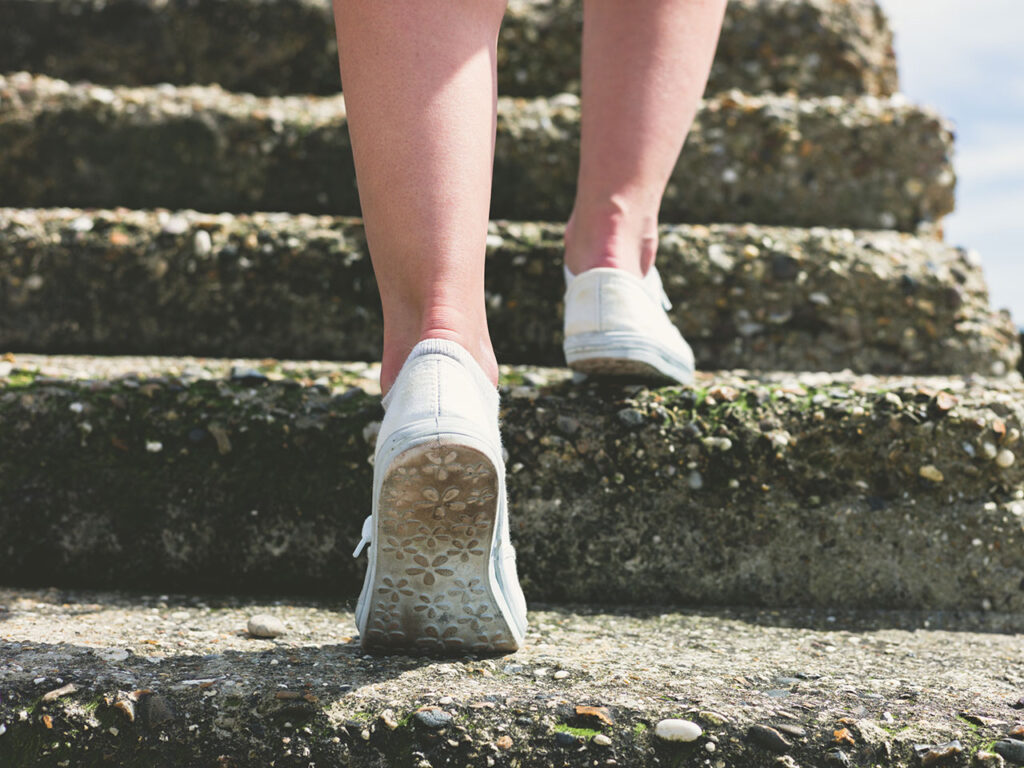
Even though it’s not a magical weight loss tool moving your body is still an essential component on this journey. When you’re planning your food intake know that physical activity spurs the hunger hormone ghrelin into action. This means you’ll often feel hungrier a couple of hours after exercise.
Moving your body is vital for building and keeping musculoskeletal strength and muscle mass. Its extraordinary health benefits include guarding against heart disease, osteoporosis, diabetes and dementia and helping to fight depression and anxiety.
Exercise has also proven to be of enormous benefit when you reach the maintenance stage. This study of participants in The Biggest Loser showed how it aids the long term maintenance of weight loss. Not only that researchers found that exercise can help to to reduce the waist circumference in post-menopausal women. Finally, if exercise has been a way of life for you since your younger years this study showed this will help you as you grow older.
Click for Evidence backed Do’s and Don’t of Exercise beyond menopause
There’s no argument that exercise is food’s great buddy, the kind you catch up with regularly and can’t live without for your feel-good fix. They work in tandem beautifully and together they’re better.
Here’s a case in point: The International Journal of Behavioural Nutrition and Physical Activity published research comparing three groups of post-menopausal women focused on better nutrition only, exercise only or food and exercise together.
After 12 months the exercise-only group lost two kilograms, the food only group 7.2 kilograms and the food and exercise group nearly nine kilograms.
The bottom line?
When it comes to losing weight what you eat matters most. In the words of The British Journal of Sports Medicine, “you can’t outrun a bad diet”.
Our ultimate tip? Keep it simple.
Would you like some help? Keep a food diary for a week and send it through to me here.

